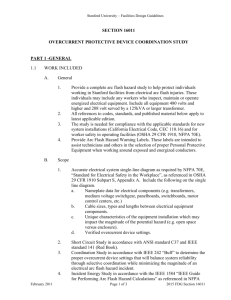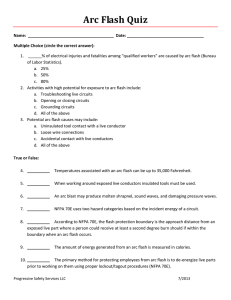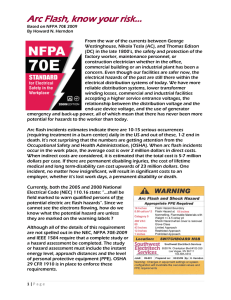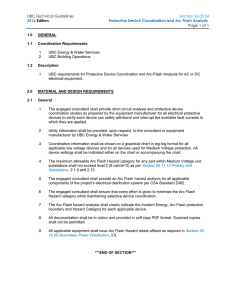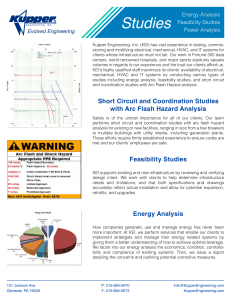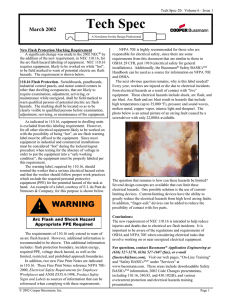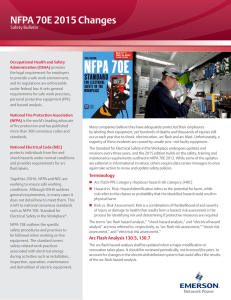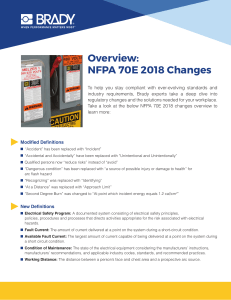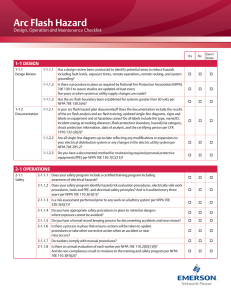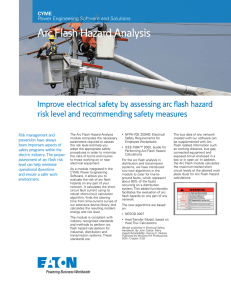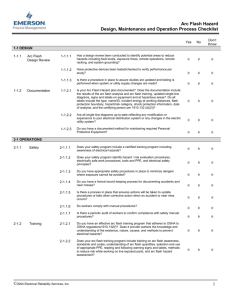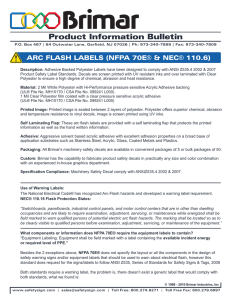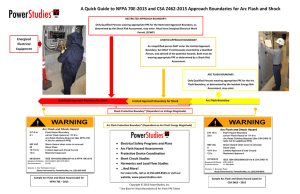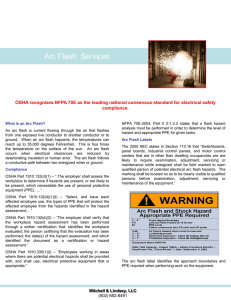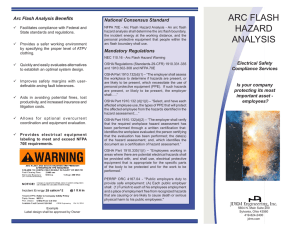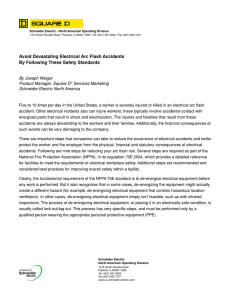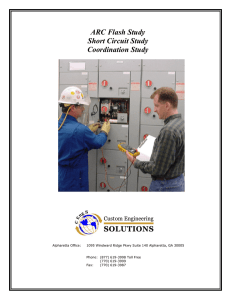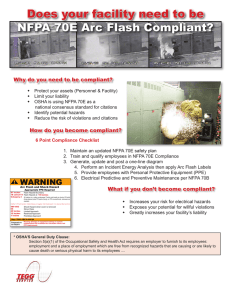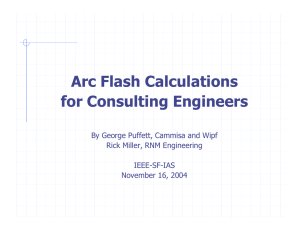THE MATH OF NFPA 70E:
advertisement
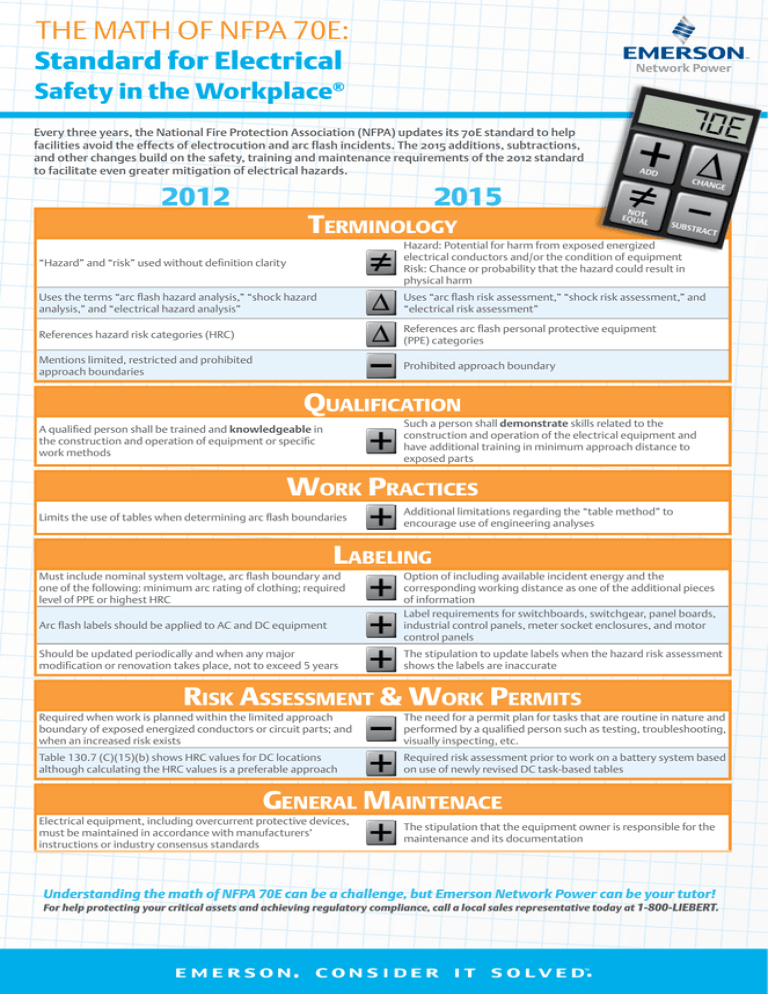
THE MATH OF NFPA 70E: Every three years, the National Fire Protection Association (NFPA) updates its 70E standard to help facilities avoid the effects of electrocution and arc flash incidents. The 2015 additions, subtractions, and other changes build on the safety, training and maintenance requirements of the 2012 standard to facilitate even greater mitigation of electrical hazards. 2012 2015 Terminology “Hazard” and “risk” used without definition clarity Hazard: Potential for harm from exposed energized electrical conductors and/or the condition of equipment Risk: Chance or probability that the hazard could result in physical harm Uses the terms “arc flash hazard analysis,” “shock hazard analysis,” and “electrical hazard analysis” Uses “arc flash risk assessment,” “shock risk assessment,” and “electrical risk assessment” References hazard risk categories (HRC) References arc flash personal protective equipment (PPE) categories Mentions limited, restricted and prohibited approach boundaries Prohibited approach boundary Qualification Such a person shall demonstrate skills related to the construction and operation of the electrical equipment and have additional training in minimum approach distance to exposed parts A qualified person shall be trained and knowledgeable in the construction and operation of equipment or specific work methods Work Practices Limits the use of tables when determining arc flash boundaries Additional limitations regarding the “table method” to encourage use of engineering analyses Labeling Must include nominal system voltage, arc flash boundary and one of the following: minimum arc rating of clothing; required level of PPE or highest HRC Arc flash labels should be applied to AC and DC equipment Should be updated periodically and when any major modification or renovation takes place, not to exceed 5 years Option of including available incident energy and the corresponding working distance as one of the additional pieces of information Label requirements for switchboards, switchgear, panel boards, industrial control panels, meter socket enclosures, and motor control panels The stipulation to update labels when the hazard risk assessment shows the labels are inaccurate Risk Assessment & Work Permits Required when work is planned within the limited approach boundary of exposed energized conductors or circuit parts; and when an increased risk exists The need for a permit plan for tasks that are routine in nature and performed by a qualified person such as testing, troubleshooting, visually inspecting, etc. Table 130.7 (C)(15)(b) shows HRC values for DC locations although calculating the HRC values is a preferable approach Required risk assessment prior to work on a battery system based on use of newly revised DC task-based tables General Maintenace Electrical equipment, including overcurrent protective devices, must be maintained in accordance with manufacturers’ instructions or industry consensus standards The stipulation that the equipment owner is responsible for the maintenance and its documentation Understanding the math of NFPA 70E can be a challenge, but Emerson Network Power can be your tutor! For help protecting your critical assets and achieving regulatory compliance, call a local sales representative today at 1-800-LIEBERT.

